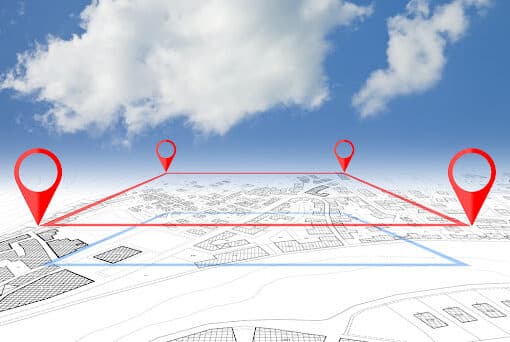National Due Diligence Services’ Professional Assessors are equipped with a comprehensive understanding of environmental responsibility, ensuring that all real estate assessments and surveys are conducted with a focus on sustainable practices and regulatory compliance.
A crucial aspect of commercial due diligence involves assessing potential environmental liabilities associated with the property to be acquired. This is often not only a prudent action for purchasers, but can also be a requirement by a potential lender to protect their collateral and compliance with any environmental regulations.
Environmental Site Assessments
National Due Diligence Services (NDDS) proactively promotes environmental responsibility by offering Phase I & Phase II Environmental Site Assessment (ESA) services. These assessments include thorough property examination, testing, and analysis to uncover potential environmental hazards, contaminants, or related environmental concerns. Beyond review, NDDS provides invaluable remediation information and expert recommendations for addressing any identified environmental issues. This approach provides clients with the knowledge of potential risks and actionable insights to rectify them effectively before, during, or after the real estate transaction.
Phase I Environmental Site Assessment
It is in the stakeholder’s best interest to order a Phase I Environmental Site Assessment (ESA) to ensure the property meets the current, established American Society of Testing & Materials (ASTM) guidelines. This assessment offers insights into potential environmental contamination and its implications on the property. A Phase I ESA does not include physical testing of paint, soil, or water present on the property but will instead have an examination of the following:
- Historical database review
- Presence of stored hazardous substances
- Historical use of hazardous substances
- Other conditions that may impact the safety and health of the property
The Phase I ESA can also include client-provided data and focused interviews to identify environmental conditions or Recognized Environmental Conditions (RECs).
Phase II Environmental Site Assessment
Once a Phase I Environmental Site Assessment has been completed, the report may conclude there are REC’s of concern and recommend a Phase II be done. The Phase II can typically involve:
- Surface water sampling
- Groundwater sampling
- Soil sampling
- Any potential hazardous materials in the surrounding area
- Vapor testing
- Boring for below-ground sampling
These tests are tailored to your property based on site-specific factors such as the surrounding environment, previous land use, regulations, chemical concerns, and property type. Once completed, the assessment offers insights into the property’s condition and recommendations for adhering to ASTM standards. The subsequent Phase II ESA report encompasses field observations, laboratory results, comparisons to regulatory levels, discussions of contaminant concentrations, and suggestions for further characterization if needed.
By offering this combination of assessment and remediation guidance, NDDS ensures that real estate transactions and developments align with principles of environmental responsibility, facilitating a sustainable approach to land use while safeguarding financial interests.
Commercial Developments and Environmental Regulations
Commercial developments are subject to numerous environmental regulations. The Environmental Protection Agency (EPA) oversees these at the federal level, but both federal and state entities collaborate closely to ensure the natural environment remains safeguarded and preserved. The following regulations may impact your property:
- The Clean Water Act
- The National Environmental Policy Act (NEPA)
- The Endangered Species Act (ESA)
- Comprehensive Environmental Response, Compensation, and Liability Act (CERCLA)
These environmental regulations primarily target stormwater management, waste disposal, hazardous waste handling, and air quality maintenance. By adhering to these regulations, developers and stakeholders contribute to the longevity of ecosystems and minimize adverse ecological impacts. Beyond environmental benefits, compliance with these regulations also holds significant legal importance. Abiding by these rules prevents the risk of legal repercussions and showcases a commitment to ethical and responsible practices, fostering a positive relationship between development projects and the surrounding community.
How National Due Diligence Promotes Environmental Responsibility
National Due Diligence Services is leading the way in promoting environmental responsibility in commercial real estate. Our careful Environmental Site Assessments (ESAs), driven by federal regulations, guarantee sustainable and environmentally responsible land use. The dedication of our Professional Assessors goes beyond just following rules; by prioritizing sustainability, NDDS actively protects the environment and enables reliable property developments. Contact us today to learn more about our Environmental Site Assessments and how they can benefit your property.





